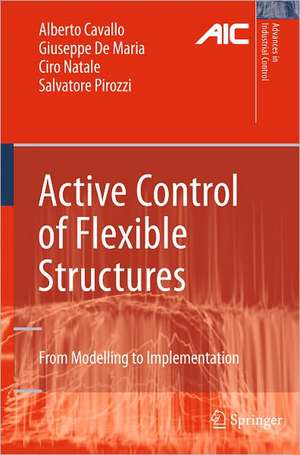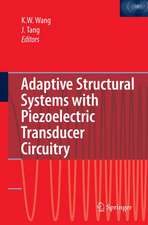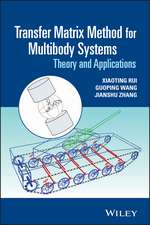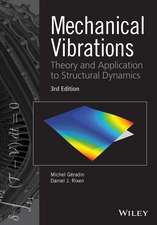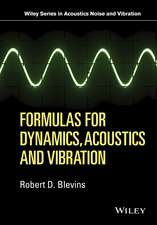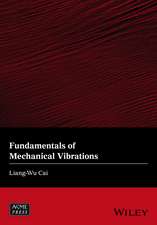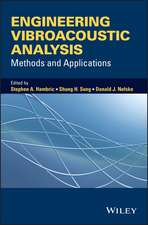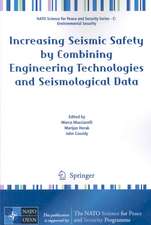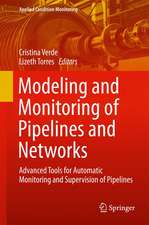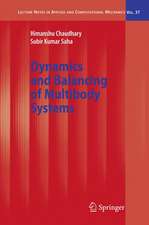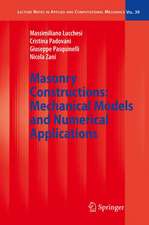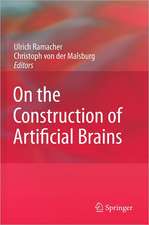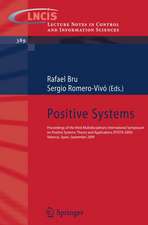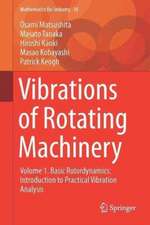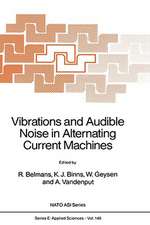Active Control of Flexible Structures: From Modeling to Implementation: Advances in Industrial Control
Autor Alberto Cavallo, Giuseppe de Maria, Ciro Natale, Salvatore Pirozzien Limba Engleză Hardback – 3 aug 2010
| Toate formatele și edițiile | Preț | Express |
|---|---|---|
| Paperback (1) | 636.63 lei 6-8 săpt. | |
| SPRINGER LONDON – 22 noi 2014 | 636.63 lei 6-8 săpt. | |
| Hardback (1) | 640.88 lei 6-8 săpt. | |
| SPRINGER LONDON – 3 aug 2010 | 640.88 lei 6-8 săpt. |
Din seria Advances in Industrial Control
- 15%
 Preț: 643.34 lei
Preț: 643.34 lei - 23%
 Preț: 582.63 lei
Preț: 582.63 lei - 18%
 Preț: 783.98 lei
Preț: 783.98 lei - 18%
 Preț: 947.35 lei
Preț: 947.35 lei - 20%
 Preț: 568.24 lei
Preț: 568.24 lei - 15%
 Preț: 643.16 lei
Preț: 643.16 lei - 18%
 Preț: 899.21 lei
Preț: 899.21 lei - 18%
 Preț: 891.33 lei
Preț: 891.33 lei - 18%
 Preț: 740.57 lei
Preț: 740.57 lei - 18%
 Preț: 961.23 lei
Preț: 961.23 lei - 18%
 Preț: 955.08 lei
Preț: 955.08 lei - 15%
 Preț: 645.28 lei
Preț: 645.28 lei - 15%
 Preț: 638.43 lei
Preț: 638.43 lei - 18%
 Preț: 901.11 lei
Preț: 901.11 lei - 18%
 Preț: 1410.94 lei
Preț: 1410.94 lei - 18%
 Preț: 728.91 lei
Preț: 728.91 lei - 20%
 Preț: 1003.77 lei
Preț: 1003.77 lei - 18%
 Preț: 947.35 lei
Preț: 947.35 lei - 15%
 Preț: 643.34 lei
Preț: 643.34 lei - 15%
 Preț: 654.30 lei
Preț: 654.30 lei - 18%
 Preț: 950.52 lei
Preț: 950.52 lei - 15%
 Preț: 644.30 lei
Preț: 644.30 lei - 18%
 Preț: 1393.09 lei
Preț: 1393.09 lei - 18%
 Preț: 950.21 lei
Preț: 950.21 lei - 18%
 Preț: 949.90 lei
Preț: 949.90 lei - 18%
 Preț: 949.42 lei
Preț: 949.42 lei - 18%
 Preț: 950.52 lei
Preț: 950.52 lei - 18%
 Preț: 1113.71 lei
Preț: 1113.71 lei - 15%
 Preț: 650.04 lei
Preț: 650.04 lei - 15%
 Preț: 644.95 lei
Preț: 644.95 lei - 18%
 Preț: 950.33 lei
Preț: 950.33 lei - 18%
 Preț: 948.61 lei
Preț: 948.61 lei - 18%
 Preț: 1112.60 lei
Preț: 1112.60 lei - 15%
 Preț: 644.63 lei
Preț: 644.63 lei - 18%
 Preț: 953.20 lei
Preț: 953.20 lei - 18%
 Preț: 945.62 lei
Preț: 945.62 lei - 15%
 Preț: 640.88 lei
Preț: 640.88 lei - 20%
 Preț: 650.92 lei
Preț: 650.92 lei - 18%
 Preț: 1112.60 lei
Preț: 1112.60 lei - 20%
 Preț: 998.36 lei
Preț: 998.36 lei - 15%
 Preț: 643.34 lei
Preț: 643.34 lei - 18%
 Preț: 948.92 lei
Preț: 948.92 lei - 18%
 Preț: 1381.43 lei
Preț: 1381.43 lei - 15%
 Preț: 651.51 lei
Preț: 651.51 lei - 15%
 Preț: 647.08 lei
Preț: 647.08 lei - 20%
 Preț: 563.66 lei
Preț: 563.66 lei - 18%
 Preț: 992.64 lei
Preț: 992.64 lei - 18%
 Preț: 1225.79 lei
Preț: 1225.79 lei
Preț: 640.88 lei
Preț vechi: 753.97 lei
-15% Nou
Puncte Express: 961
Preț estimativ în valută:
122.63€ • 128.04$ • 101.49£
122.63€ • 128.04$ • 101.49£
Carte tipărită la comandă
Livrare economică 04-18 aprilie
Preluare comenzi: 021 569.72.76
Specificații
ISBN-13: 9781849962803
ISBN-10: 1849962804
Pagini: 220
Ilustrații: XVII, 197 p.
Dimensiuni: 155 x 235 x 19 mm
Greutate: 0.43 kg
Ediția:2010
Editura: SPRINGER LONDON
Colecția Springer
Seria Advances in Industrial Control
Locul publicării:London, United Kingdom
ISBN-10: 1849962804
Pagini: 220
Ilustrații: XVII, 197 p.
Dimensiuni: 155 x 235 x 19 mm
Greutate: 0.43 kg
Ediția:2010
Editura: SPRINGER LONDON
Colecția Springer
Seria Advances in Industrial Control
Locul publicării:London, United Kingdom
Public țintă
ResearchCuprins
Modelling of Flexible Structures.- Identification of Flexible Structures.- Modal Feedback Control of Flexible Structures.- Optimal Feedback Control of Flexible Structures.- Implementation Issues.- Experimental Results.- Conclusions and Future Developments.
Recenzii
From the reviews:
“Intended for graduate students and practicing engineers, this book treats vibration control for structural systems. It addresses identification of the dynamic model of the structure, placement of sensors and actuators, formulation of control constraints, controller design and simulation, and controller implementation and rapid prototyping. The material is based on the authors’ work on two projects financed by the European Community in the 5th and 6th Framework programs.” (IEEE Control Systems Magazine, February, 2012)
“Intended for graduate students and practicing engineers, this book treats vibration control for structural systems. It addresses identification of the dynamic model of the structure, placement of sensors and actuators, formulation of control constraints, controller design and simulation, and controller implementation and rapid prototyping. The material is based on the authors’ work on two projects financed by the European Community in the 5th and 6th Framework programs.” (IEEE Control Systems Magazine, February, 2012)
Notă biografică
Alberto Cavallo was born in Napoli, Italy, on 16th March 1964. In 1989 he obtained the Laurea degree at the Università di Napoli Federico II with Laude, discussing the thesis "Robust Stability Analysis for Linear Time-Invariant Systems", and in 1993 he completed his PhD discussing the thesis "A solution to tracking problems via sliding manifolds". Alberto Cavallo is currently Associate Professor both of Advanced Automatic Control and System Identification at the Seconda Università di Napoli. His research interests have dealt with many aspects of the theory of automatic control, including robust control techniques with aeronautical and aerospace applications, with parametric uncertainties and H-2 and H-infinity indices, high-order sliding-manifold control, active control of sound and vibration, modelling and control of smart actuators, control of systems with hysteresis, system identification, fuzzy control, modeling and control of water-resource systems and decision-support systems for hydraulic applications. He has published more than 70 journal and conference papers, and is also local team-leader for several national and international research projects connected with aeronautic applications of automatic control.He is the author of the book Using MATLAB, SIMULINK and Control System Toolbox: A Practical Approach (Prentice Hall), and has written more than 50 papers for journals and conference proceedings. Giuseppe De Maria was born in Napoli, Italy, in December 1948. In 1973 he received the Laurea degree in electronic engineering from the Università di Napoli. He was Associate Professor of Automatic Control at the University of Napoli Federico II. Since 1992 he has been full Professor of Automatic Control at the Faculty of Engineering of the Seconda Università di Napoli. His research interests include robust control, control of mechanical systems, industrial and advanced robotics, control of aerospace and aeronautical systems, and active noise and vibrationcontrol of flexible structures. At present, his research interests are focused on the control of smart materials, in particular piezoceramics and magnetostriction, with the aim of realising artificial muscles. Concerning this field of research he is responsible of national and European research contracts. He is the workpackage leader of the project MESEMA (Magnetostrictive Equipment and Systems for even more electric Aircraft) in the 6thFramework Programme of European Community. Ciro Natale was born in Caserta, Italy, on 12th December 1969. He received the Laurea degree and the Research Doctorate degree in Electronic Engineering from the Università di Napoli in 1995 and 2000, respectively. From 2000 to 2004 he has been Research Associate at the Department of Information Engineering of the Seconda Università di Napoli, where he currently holds the position of Associate Professor of Automatic Control and Industrial Robotics. From November 1998 to April 1999 he was a Visiting Scholar at the Institute of Robotics and Mechatronics of the German Aerospace Center in Oberpfaffenhofen, Germany. His research interests include modeling and control of industrial manipulators, force and visual control, cooperative robots. More recently, his activities are focused on modelling and control of flexible structures, active noise and vibration control and modelling, and identification and control of smart materials. He has published more than 50 journal and conference papers and he is author of the book: Interaction Control of Robot Manipulators: Six-degrees-of-freedom Tasks (Springer 2003). Salvatore Pirozzi was born in Napoli, Italy, on 21st April 1977. He received the Laurea and the Ph.D. degrees in electronic engineering from the Seconda Università di Napoli, Aversa, Italy, in 2001 and 2004, respectively. He is currently a Research Associate at the Seconda Università di Napoli. His research interests include modelling and control of smart actuators and sensors for advancedfeedback control systems as well as identification and control of vibrating systems.
Textul de pe ultima copertă
Active Control of Flexible Structures deals with vibration control for large-scale flexible structures which are, or may be, subject to a broadband primary vibration field. The authors present a complete rationale for solving problems of vibration, from experimental structural characterization to controller implementation. In reaching this objective they address the following steps:
• experimental identification of the dynamic model of the structure;
• optimal placement of sensors and actuators;
• formulation of control constraints in terms of controller frequency response shape, based on the specification and characteristics of sensors and actuators;
• controller design and simulation; and
• controller implementation and rapid prototyping.
The experimental identification procedure is based on a gray-box approach tailored to the estimation of modal parameters of large-scale flexible structures. The actuator/sensor placement algorithm maximizes a modal controllability index so as to improve the effectiveness of the control action. Taking into account the physical limitations of sensors and actuators, the controller is chosen as a stable, band-pass MIMO system resulting from the closed-form solution of a robust control problem. The closed-form solution is particularly attractive for large-scale control systems, overcoming possible numerical problems caused by ill-conditioned solutions. Experimental results on an aeronautical stiffened skin panel are presented using rapid-prototyping hardware.
Adaptive Control of Flexible Structures will be of interest to academics and practising engineers working on vibration-reduction problems in aerospace and other transportation environments; to civil engineers concerned with seismic vibration in buildings; and to graduate students taking courses in mechanical, aeronautical and control engineering, particularly when involved with smart structures andactuators.
• experimental identification of the dynamic model of the structure;
• optimal placement of sensors and actuators;
• formulation of control constraints in terms of controller frequency response shape, based on the specification and characteristics of sensors and actuators;
• controller design and simulation; and
• controller implementation and rapid prototyping.
The experimental identification procedure is based on a gray-box approach tailored to the estimation of modal parameters of large-scale flexible structures. The actuator/sensor placement algorithm maximizes a modal controllability index so as to improve the effectiveness of the control action. Taking into account the physical limitations of sensors and actuators, the controller is chosen as a stable, band-pass MIMO system resulting from the closed-form solution of a robust control problem. The closed-form solution is particularly attractive for large-scale control systems, overcoming possible numerical problems caused by ill-conditioned solutions. Experimental results on an aeronautical stiffened skin panel are presented using rapid-prototyping hardware.
Adaptive Control of Flexible Structures will be of interest to academics and practising engineers working on vibration-reduction problems in aerospace and other transportation environments; to civil engineers concerned with seismic vibration in buildings; and to graduate students taking courses in mechanical, aeronautical and control engineering, particularly when involved with smart structures andactuators.
Caracteristici
Shows the reader how to deal with not only vibration induced by distinct resonance peaks but also with those caused by broad-band disturbance Shows the reader how to test results quickly using rapid prototyping technology Relies on well-know robust optimal control strategies Includes supplementary material: sn.pub/extras
